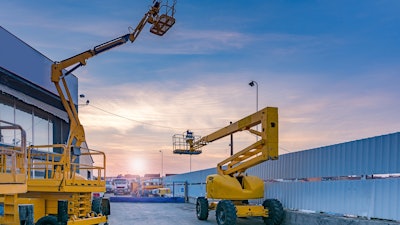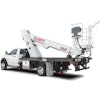
It is all good news for the rental industry. The American Rental Association expects continued growth for the next five years, and the Penetration Index continues to climb, indicating that the percentage of construction equipment on work sites is climbing, which in turn means contractors are buying less equipment and turning over the cost of ownership to the rental companies.
Rental company owners should be pleased because there are more rental opportunities available. On the other hand, the favorable rental metrics are creating more equipment rental companies in your “territory." Rental transactions and opportunities are growimg, generating growth in rental fleets owned by both rental companies as well as equipment dealers.
Continued growth in rental and the related rental fleets means one thing in terms of planning for the balance of 2018 and beyond: more competition. And more competition means:
- More sales personnel calling on your existing customers
- More rental sources for customers to call, including the "digital middleman" who fills customer needs by contacting local rental companies
- Potential loss of key personnel… sales, techs and drivers
- Additional marketing and sales expenses
- Volatile rental rates as newcomers try to penetrate the market
- Pressure on profitability and cash flow
- Problems meeting bank covenants
There is no question… as the rental industry heats up, so does the competition and the problems that go along with increased competition.
Not your father's competition
The competition comes from basically three sources:
- Equipment dealers
- Pure rental companies
- Digital rental transaction brokers
- Digital contractor-to-contractor rental brokers
A lot of you are likely thinking, “Where did all this competition come from?” and “Are there really people out there making money brokering rental transactions?” All I can say is when the industry is hot, the players in every market will increase, meaning existing players have to mitigate new market rates which could lead to lower Rental Gross Profit margins and thus, lower overall net profits and cash flow.
The digital players are basically providing the equipment provider with a re-rent transaction. If you have equipment available it is found money, which you should probably take advantage of. In fact, you may want to contact these vendors to get added to their "select provider list." In the end, some rental companies will get hurt by the digital crowd and other might come out ahead. Do yourself a favor and learn what you can about the digital rental companies and see if you can sign up as a provider.
Equipment dealers provide both short- and long-term rentals. New competition in their territory is sure to put pressure on rental profits and fleet ROI. Dealers might find they need to reduce the number of units in their fleets to maintain a reasonable ROI. Reducing the rental fleet could come at a cost if the used equipment markets get flooded with used rental units. So, in order to keep control of both their balance sheets and income statements they might reduce future equipment purchases which won't not sit well with their OEMs. But with “rental” being a small part of their sales mix, they do have other profit silos to work with to make up for rental losses.
Limit your exposure
So now we get down to the pure rental companies who have the greatest exposure to new competition because rental is their primary source of profits and cash flow. Pure rental companies that find volatile rates are reducing rental revenues to levels lower than expected have to take steps to get rental costs to levels that bring rental GP% back to where it belongs. But for rental companies, this is easier said than done.
Rental cost of sales is primarily made up of tech payroll, road tech payroll, truck driver payroll and parts used for maintenance of both rental assets as well as delivery vehicles. These are tough costs to control if you have multiple locations but it's even a problem for single-location rental stores if there is little or no accountability associated with the work performed.
Equipment dealers do not have this problem because they have formal parts and service profit silos who provide services to the rental department. Parts and service work is usually provided to the rental department using a “best customer” rate and is billed in the normal course of business. Using this process, the rental department gets to see the quotes for both labor and parts and at least knows that to expect going forward for similar work. The dealer rental department will have its own check-in and check-out personnel as part of their payroll cost, but the rest is supplied by other departments. The point here is dealers know their hard costs to maintain the fleet and what they need to do to better control costs.
Pure rental companies usually have techs in house who prepare work orders for work performed on the fleet and vehicles. In many cases there was no formal review of the work order in terms of actual vs expected cost, nor much control of hours worked on a particular job. Having an internal service manager to estimate the work in terms of both parts and hours would mitigate this situation as long as there is accountability that goes along with the process. In short, pure rental companies need to keep “rental” cost of sales in line to the point where management is comfortable that their internal results are competitive against other outside service providers.
Pure rental companies need to:
- Quickly examine planned equipment purchase orders and make adjustments as necessary
- Find out what all of their competitors are doing
- Have their sales personnel ask about sales calls from other sources and what “deals” they are throwing on the table
- Get control of costs should rental revenues decrease
- Be cautious about 2019 equipment orders
- Review bank covenant requirements and estimate 2018 EBITDA to see where things stand; you can mitigate a problem
- Get control of hours worked by both techs and drivers
- See if outsourcing works for you
Competition is really good for the industry and for those with the ability to plan and adjust to the changes taking place. Those that follow the status quo, however, will find themselves eventually with a cash shortage if rental volume falls and they do nothing to fix the problem.





















